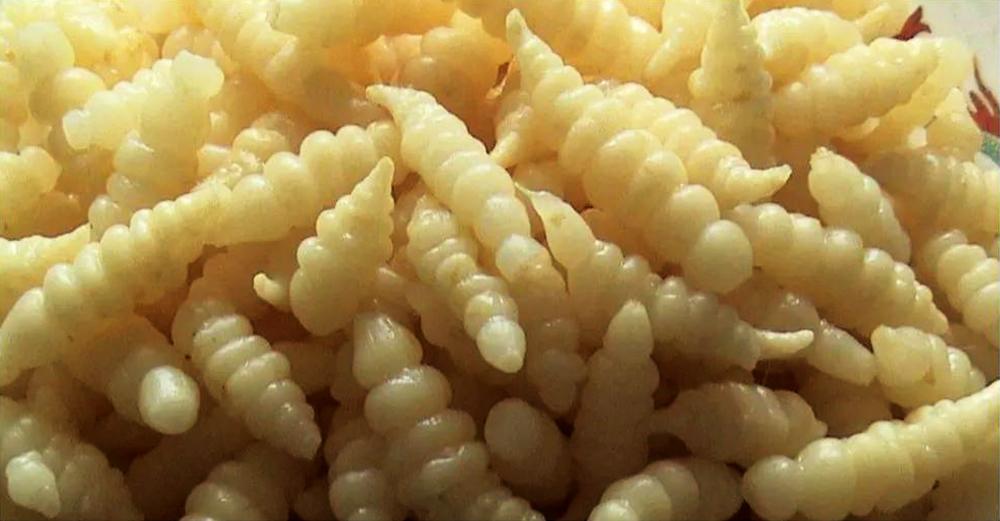Around this time of year for the last few years these have turned up in the local supermarket (never in the wet / farmer's market).
They are not maggots! These are Stachys affinis, a root vegetable called variously Chinese artichokes, Japanese artichokes or Crosnes. They also go under various names in Chinese: 甘露子 (gān lù zǐ), 甘露儿 (gān lù ér), 玉环菜 (yù huán cài) or 草石蚕 (cǎo shí cán).

The first two English names reflect some early confusion as to where they originated. They are native to China. The third name, Crosnes, refers to the home village of a French horticulturist named M. Pailleux received a gift of the plant from the Russian Legation in Beijing and went on to successfully introduce it to Europe, naming it after his village but adding du Japon - Crosnes du Japon. This addition was soon dropped.
It is unrelated to either the Globe Artichoke or the Jerusalem Artichoke, but visually vaguely resembles the later, but tastes more like the former. The tubers are about 5cm / 2 inches long and should be used quickly as they discolour rapidly after being disinterred. If cleaned well ( I use a soft tootbrush), there is no need to peel them (in fact, it's difficult due to the shape). The can be eaten raw in salads or boiled. Alternatively, they are sometimes parboiled then fried. Pickled Chinese artichokes are also available in some stores.

